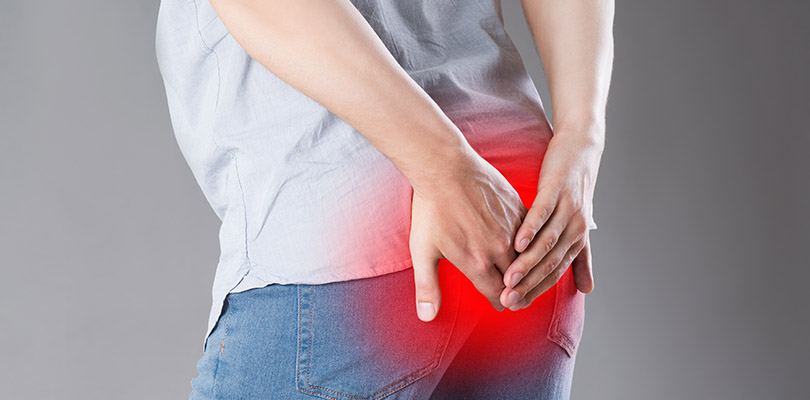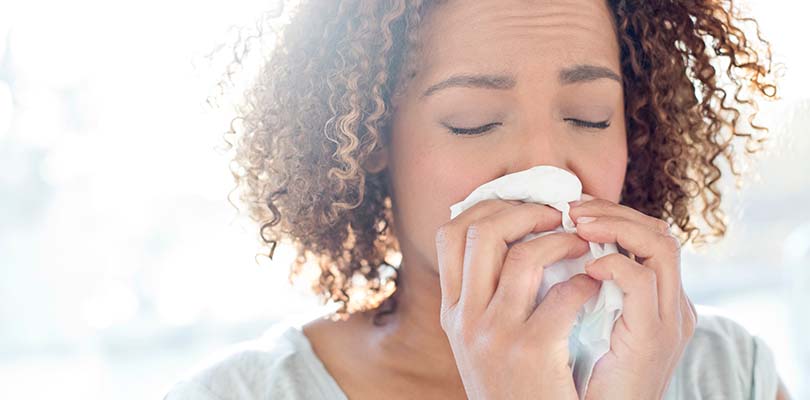Dislocated Shoulder
Unlike most of the joints in your body, the shoulder is amazingly flexible, which allows you to turn and move the top of your arm in virtually any direction. However, this incredible mobility doesn't come without a price – the shoulder joint is unstable and likely to pop out of place.
A dislocated shoulder is a type of an injury where a blow or fall forces your upper arm to disconnect from your shoulder socket. In severe cases, the tissues and nerves surrounding the shoulder joint can become overstretched or torn.
Shoulder dislocation can occur in many different directions, and the description of a dislocated shoulder depends on where the humeral head settles after slipping out of the shoulder socket.
More than 95% of dislocated shoulder cases are anterior dislocations, where the humeral head ends up in front of the joint.
A posterior dislocation occurs when the humeral head moves back towards the shoulder blade. Other rare kinds of shoulder dislocations include luxatio erecta, a minor dislocation beneath the joint, and intrathoracic dislocation where the humeral head becomes trapped between the ribs.
How Do You Dislocate Your Shoulder?
Shoulder dislocation can happen if you fall on to your arm severely, get hit in the shoulder, or try to prevent falling with your hand.
Most individuals, especially young people, suffer from this injury while playing a contact sport such as football, volleyball, rugby, soccer, or hockey. In older individuals, the most common cause of a shoulder dislocation is falling on an outstretched hand – for instance, after slipping on ice.
Shoulder dislocations happen more easily in individuals with a high level of flexibility, particularly those with loose joints. You are also prone to dislocation if you have multi-directional instability, which refers to a genetic tendency that makes a shoulder unstable or loose.
How to Tell If Your Shoulder is Dislocated?
In most instances of a dislocated shoulder, the ball area of the joint slips out to the front of the shoulder socket. When this happens, you'll experience the following:
- Moving your arm will be difficult and extremely painful
- Your shoulder will abruptly look square instead of round
- A lump or bulge may be visible beneath the skin to the front of your shoulder
Dislocated Shoulder Symptoms
Shoulder dislocation involves forcibly pulling the humeral head out of the socket. Additionally, the cartilage, muscle, nerves, and other tissues in the area can become strained and torn. As a result, if you suffer from a shoulder dislocation, you'll likely experience the following:
- Severe pain
- Deformity of the shoulder joint
- Inability to move the shoulder in any direction
- Bruising and/or swelling
- Weakness, numbness, and/or tingling in the areas around the joint (i.e., neck, arm)
- Muscle spasm in the areas around the joint
There are plenty of options for brightening your teeth, from teeth whitening kits to toothpaste. Find out more about your teeth whitening options here.
Just like most bone injuries, severe pain may result in additional symptoms, including sweating, weakness, nausea and vomiting, and lightheadedness. This happens due to the activation of the vagus nerve that hampers the adrenaline reflex in the body. Sometimes, this may trigger passing out or fainting.
It's important to note that once you have suffered a dislocated shoulder, the joint becomes unstable, leaving you more susceptible to future dislocations. Therefore, you must take preventative steps to protect your shoulder, including:
- Minimize your risk of falling
- Wear protective gear if you play a contact sport
- Rehabilitate your shoulder properly
- Engage in regular physical activity including strengthening and stretching of the shoulders
How Do Specialists Diagnose a Shoulder Dislocation?
A specialist will start by taking your history, which includes the time of dislocation, how it took place, previous serious injuries, or health disorders. Then the specialist may perform a short general exam coupled with a more comprehensive assessment of the injured shoulder to diagnose a shoulder dislocation, including examination of the following:
The deltoid muscle (the curved muscle that covers the shoulder joint) – may look flatter on the injured side compared to the healthy side. Any slight twist or movement of the arm may result in pain in the shoulder.
Hand movement, touch responsiveness, and the pulse at the wrist are typically normal. Damage to muscles, nerves, ligaments, tendons, and blood vessels can happen. It can be hard to diagnose these injuries as the pain of the shoulder dislocation incapacitates you.
Your doctor may perform shoulder X-rays to diagnose a shoulder dislocation. X-rays can help to determine the existence of displacement as well as checking other injuries such as tearing of the ligaments that connect the collarbone to the shoulder blade or fissure of the upper humerus.
How to Treat a Dislocated Shoulder
The dislocated shoulder must be treated as soon as possible. Your doctor will have to return the humeral head into the shoulder socket. Once the humeral head is back in its correct position, the pain will significantly decline, and your shoulder should return to normal functioning with a few weeks.
After the doctor has repositioned your shoulder joint, you can use at-home treatment to minimize pain and swelling. Here are examples of effective at-home treatments for dislocated shoulders:
- Ice your shoulder to minimize inflammation and pain significantly. Ice the area in 10- to 15-minute intervals for the first 24 to 72 hours after injury.
- Use a shoulder immobilizer or sling to stop further injury until you receive medical assistance by a specialist. Remember to ask your doctor whether you should continue using a sling after medical treatment.
- Perform stretching and strengthening exercises to speed up the recovery process of your shoulder. Ask your doctor to recommend exercises that are appropriate for your situation.
- Support the dislocated shoulder by placing a pillow between your body and the injured arm.
- Take over-the-counter painkillers or nonsteroidal anti-inflammatory medicines. Keep in mind that these medications may have side effects such as ulcers, high risk of bleeding, strokes, or heart attacks when used for a long duration. It's imperative to consult your doctor before using them.
Conclusion
Shoulder dislocation is an injury that is commonly experienced by individuals that take part in contact sports. If you suffer a shoulder dislocation, it's not only painful but can make everyday tasks nearly impossible to complete.
Fortunately, immediate medical treatment by a professional can reposition the shoulder joint, which helps to alleviate the pain and restore the normal function of the joint, usually within a few weeks.







